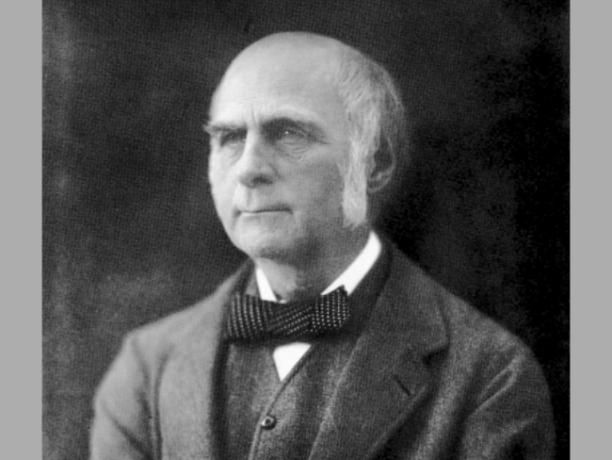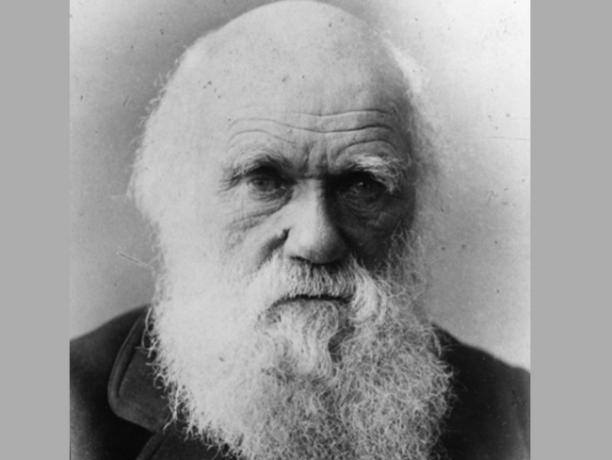Eugenics, also called eugenics, consists of a series of beliefs and practices aimed at improving the genetic quality of the population.
One of the justifications for the existence of eugenics is that the human races considered superior prevail in the environment in a more adequate way.
For this reason, many people considered unworthy to pass on their respective heredity to their descendants were subjected to sterilization against their will.
The concept is considered by some scholars as a social philosophy, that is, a social eugenics whose philosophy would have the purpose of organizing society. However, this idea is not universally accepted.
Origin of the concept of eugenics
Although the practice already exists, the term eugenics, a word of Greek origin that means “well-born”, was created by the Englishman Francis Galton, in 1883.

Francis Galton
Galton, cousin of Charles Darwin, was a scientist who had a great fascination for matters related to biological heritage. He believed that if you could quantify heredity, you could produce better human beings.
The concept of human eugenics had a very big repercussion in the United States. Since Industrial Revolution, many peasants migrated to cities in order to seek employment and, consequently, a better life.
During this period, the United States faced for the first time a problem of social distribution.
In addition to the migration of peasants, another striking fact was the arrival of many immigrants who came especially from Europe.
Galton's concept actually sought to manipulate human genetics to improve future generations.
However, eugenics ended up taking on other aspects in the United States, being considered not only to enable the reproduction of geniuses (Galton's goal), as to prevent people considered inferior and unworthy of transmitting their heredity from being able to reproduce.
Then comes what has been designated as negative eugenics.
know more about heredity.
Types of eugenics
Check out the two types of eugenics below.
negative eugenics
Negative eugenics was intended to prevent people considered "limited" from reproducing.
They were considered "limited" people, for example, those who had mental problems, hereditary diseases, contagious diseases, etc.
The concept of negative eugenics has become so present in the reality of the United States that it has become constitutional in the country.
One of the most famous cases, which occurred in 1927, was that of Carrie Buck. The young woman lived in the Virginia State Colony for Epileptics and the Mentally Deficient and the superintendent of the place at the time considered that she should not have children.
The case was taken to the Supreme Court and Carrie was found to have severe mental development problems. Thus, in a vote that ended with 8 votes in favor and 1 against, it was decided that the young woman would be sterilized.

Photo of Carrie Buck and her mother in 1924
Since then, in a verdict issued by the judge Oliver Wendell Holmes Junior on May 2, 1927, the sterilization of people considered "limited" became constitutional.
positive eugenics
Positive eugenics actually consists of the original concept of the word eugenics: encouraging people considered superior and healthy to reproduce to, in this way, follow a human species with considered characteristics desirable.
These characteristics considered desirable contemplated a series of factors such as eye color, hair color, sobriety and even some curious points like love for the sea and genes from warriors.
With this, the aim was to apply the already developed theory of natural selection, by Charles Darwin.

Charles Darwin
The issue was taken so seriously in the United States that competitions were held at agricultural fairs and even at universities to determine which families were most apt to reproduce.
In these competitions, people were subjected to psychological tests, medical tests and intelligence tests, and were required to provide a family history.
Those who were considered fit were given a medal with the phrase "I have a beautiful heritage" in recognition of their abilities.
know more about natural selection.
Nazi eugenics
Despite having spread with greater proportions in the United States, the truth is that the ideas and concepts defended by eugenics have spread throughout the world.
Many attribute to hitler the fixed idea of trying to stipulate that one race is superior to another, but the truth is that just a brief study on what eugenics means to make it clear that this concept predates the period of the dictatorship Nazi.
However, it cannot be denied that Hitler put into practice the eugenic principles in what we might call racial eugenics.
The Nazi approach was not content with sterilization to prevent births and in certain cases applied extermination.
With this measure, the concentration camps of the Holocaust, where thousands of Jews lost their lives.

Concentration camp in Auschwitz.
know more about Nazism and Holocaust.
Eugenics in Brazil
The first texts on eugenics appeared in Brazil in 1910, through press publications and academic articles in the field of medicine.
In 1918 the Eugenic Society of São Paulo, making Brazil the first country in South America to host such a community.
The Society brought together more than one hundred members, including engineers, journalists, doctors and some names from the intellectual elite of the time, all led by what was considered the father of eugenics in Brazil: Renato Ferraz Kehl.
In addition to being the founder of the Society, Renato (who defined the word eugenics as "humanity's religion") was a physician from São Paulo, who worked in activities aimed at rural sanitation and hygienic education and sanitary.
He was also responsible for launching the Eugenics Bulletin (in 1929), a publication that circulated for four years with the aim of publicizing eugenic measures among Brazilians. In the same year, the First Brazilian Congress of Eugenics was held.
At the beginning of the 20th century, it was believed that blacks were responsible for the existence of a series of epidemics.
Thus, for the intellectuals of the time, eugenics would be a way of carrying out a kind of “social hygiene”. Anyone who did not fit into the established concept of superior race was considered an evil to be fought.
One of the main objectives of Brazilian eugenics was to fight immigration to avoid mixtures of races in the future, thus ensuring the conservation of racial and physical characteristics considered good.
According to eugenics standards, the high rate of Brazilian mestizaje made Brazil's existence as a nation unfeasible.
The eugenic ideas considered capable of solving the problem were:
- Whitening: mixing other races with the European white race in order to whiten the population.
- Selection of immigrants: creation of a proposal that suggested the end of non-white immigration.
- Sex education: with the intention of guaranteeing a healthy offspring.
- Control of human reproduction: generation of children only among couples considered healthy (taking into account eugenic standards) in order to form a perfect Brazilian elite.
- Matrimonial control: non-realization of marriages between different races and social classes.
Influential Brazilians and a position on eugenics
- Monteiro Lobato: in favor of eugenics.
- Belisário Penna: in favor of eugenics.
- Octávio Domingues: in favor of eugenics.
- Edgard Roquette-Pinto: in favor of eugenics.
- Oliveira Viana: in favor of eugenics.
- Julio de Mesquita: in favor of eugenics.
- Arnaldo Vieira: in favor of eugenics.
- Manoel Bonfim: against eugenics.
know more about racism and racial prejudice.
Eugenics and Hygienism
Eugenics consisted of a series of measures aimed at improving the genetic quality of the population.
The main objective was to ensure that people considered "limited" (such as people with disabilities, with hereditary health problems, with contagious diseases, and of races other than the white race) did not reproduce.
In this way, they had as objective that the population would be formed by people considered superior, more intelligent and with physical characteristics considered “desirable”.
With this objective in mind, some measures were adopted, such as the sterilization of people considered "limited" because the hygienists believed that they were not worthy of transmitting heredity, not performing marriages between people of the white race with people of other races, etc.
O hygiene, in turn, focused on improving the health of the population through measures that advocated changes in social patterns and certain behaviors of the poorest strata.
The emergence of hygienism took place after reflections by physicians and sanitarians regarding the constant problem of epidemic outbreaks of diseases such as, for example, tuberculosis and yellow fever.
Some of the measures advocated by hygiene were:
- Water treatment.
- Grounding of ponds.
- Positioning of cemeteries and slaughterhouses in remote areas of the city.
- Regulation of a minimum height for the roofs of dwellings in order to ensure adequate ventilation.
- Recommendation for periodic cleaning of houses.
- Creation of social services that provided guidance on housing conditions.
Common point between eugenics and hygiene
Both the measures adopted by eugenicists and hygienists ended up generating a great wave of prejudice and segregation in relation to a certain part of the population.
With eugenics, blacks, immigrants, homosexuals and people with serious health problems came to be considered inferior.
Hygienism, in turn, brought great prejudice against the poorest population, as the great epidemics that plagued the population were attributed to their poor living conditions.
Difference between eugenics and hygiene
Despite having as a common point the prejudice generated against part of the population, eugenics and hygiene present as the main difference the measures used by each one to achieve their respective goals. It is considered that, in a way, both sought to preserve the privileged strata of society.
While eugenics justified its foundations based on the genetic scope (the heredity of good genetics would guarantee the existence/preservation of a human race considered superior), hygienism based its measures on health (change in social and hygiene habits, especially of the poorest layers, would improve the health).
The impact of eugenic principles today
There are those who attribute to eugenic principles some social problems that are perpetuated in humanity from generation to generation.
The eugenic principles, in a way, even show where the ideals of beauty and perfection to which humanity is subjected until today may have come.
It is also the basis of many of the existing prejudices regarding ethnicity, physical constitution, social class and sexual orientation, for example.
It certainly left marks of a moral nature, which society still faces today.
See too:
- Racial slur and racism
- Books on racism that everyone should read
